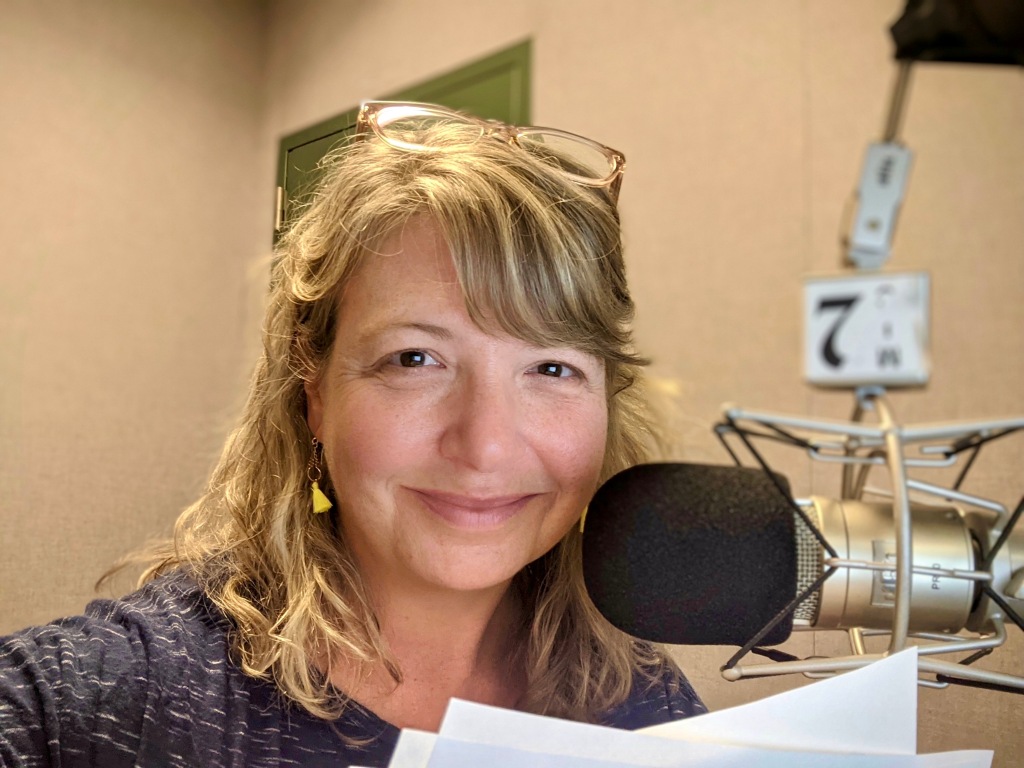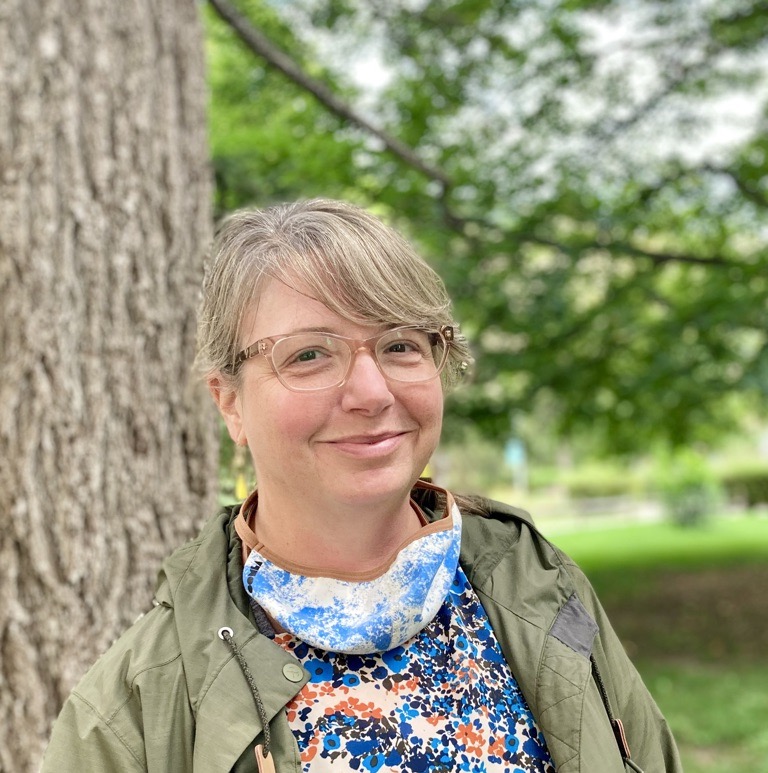By Kathleen Shannon

Photo by Kathleen Shannon
Professor Ray Fanning teaches broadcast journalism courses as well as core undergraduate courses in the j-school. He joined the staff in 2007 after working at TV stations in Portland, Ore., Salt Lake City, Spokane, Wash. and Boise, Idaho. His radio reporting on wrongful convictions in Montana won multiple awards. He’s currently working on a project about one of Missoula’s most influential architects.
Ray sat down with graduate student Kathleen Shannon to talk about his career, projects, the courses he teaches and the growing accessibility of video journalism.
The transcript of their conversation has been edited for length and clarity. Read until the end to learn his favorite ways to get out on the water.
Q: What was the most formative experience of your career before you started teaching?
A: I worked as a as a newscast producer for probably 20 years. And, you know, you’re putting together a newscast every day. The highlights of things I got to do in that time was I got to cover three Olympic Games: Nagano, Salt Lake City and Athens. And the last one I did right before I switched over to start teaching. That [meant] getting a chance to cover something that the world is watching. That’s really gratifying.
Q: Are you tracking the Beijing games right now?
A: Absolutely. Yeah.
Q: When you’re watching the Olympics now, as someone who has formerly worked at producing the coverage of that, do you find yourself lost in the games? Or do you find yourself sort of critiquing the video approach?
A: I think it’s a lot more curated and packaged now. There are lots of different places to see the Olympics and, you know, no one’s waiting to hear who won because you can find out [even] when it’s in a different country [and] a different time zone. So I find that they’re really curating and finding these stories that they’re going to follow, you know, like the Shaun White story. They put a lot of emphasis on that when there’s a whole lot of other stuff going on. The sort of nightly news, primetime coverage, is narrower than it used to be. They’re finding the stories that they really think people will tune into emotionally. So then you’re on your own to go out and find the other stuff that they aren’t covering in the prime time block in the evening.
Q: Yeah. I can see how that’s happened, too. Tell me about some recent projects you’ve worked on.
A: Around 2012 or 2013, I did a series of stories for Montana public radio on wrongful convictions in Montana. If you’ve listened to Jule [Banville’s] podcast, [An Absurd Result], it was sort of based around the same case, but not the same angle. The impetus for the stories I did was that it had been 10 years since [the wrongfully-convicted man] was exonerated. So I went back and looked at what the state had done to maybe solve some of the problems that lead to wrongful convictions, like the way they do photo lineups for eyewitness identification. There were problems in that case in the state crime lab. So I went back to the state crime lab and looked at what reforms they’d done. There were problems with the public defender’s office [I looked at]. Ten years after his exoneration, what has the state done to try to minimize wrongful convictions?
And then I did a documentary for Montana Public Radio on race. At the time, there were a lot of the protests going on for Black Lives Matter. Montana was one of those states that never gets much attention in terms of what the race relations ar, and what the racial problems are. So I tried to look at that in terms of, you know, over-representation of minorities in Montana prisons, and just different experiences of minorities in Montana and tried to tell some of their stories.
Now I’m currently working on a documentary for Montana PBS, that’s going to be about an architect named A.J. Gibson. He’s probably Western Montana’s most prominent architect, not that most people would know his name. But he designed Main Hall, he designed Jeannette Rankin Hall, he designed five of the first buildings on campus. He also designed the Missoula County Courthouse and a lot of residential homes including the big Daly Mansion in the Bitterroot. He was a force in shaping the idea of Western architecture. That’s what I’m working on now.
Q: I’m interested in what it’s like approaching video stories that are more historically-based. I imagine it’s different to talk to someone who’s currently dealing with the issues of race or wrongful conviction versus digging into history.
A: There are a lot of sources. You can’t go, “what was this guy like?” because, you know, all the people who knew him were no longer with us. H. Rafael Chacón in the art department wrote a book about Gibson. We’re sort of using Chacón as our central expert, and then looking at the architecture and the development of the architecture. So it’s more visual than it is interview-based, which makes it interesting. And then a lot of it’s going to be archival photographs. You can also do some some interesting things with drone photography now that give you interesting angles and shots on the buildings. So, that’s the idea: looking at how this sense of Western architecture evolved from the idea of a log cabin into various other things.
Q: What are you excited about this semester?
A: Well, one of the things I’m excited about is we’re revamping the intermediate video class. We lost the faculty member who taught the production side of the class. Normally, this is the class where students get to learn how to put together a live newscast. Now it’s shifting into being an advanced video recording class. So it’s been fun to tweak that class and change it up a little bit this semester.
Q: What other courses are you teaching this semester?
A: I’m teaching Journalism 100, sort of the basic entry class that we teach online in the spring. I have about 110 students in that class. Most of our classes are, you know, 20 students or fewer, but that’s one of the bigger ones.
[Another class] I’m teaching this semester is the beginning photo and video course, Journalism 257. I teach that most semesters. I’ve taught all of the lower [division] core courses, but in the upper division, mostly I teach in video.
Q: How did you get interested in video?
A: I’ve always had kind of a fascination with the idea of being able to share pictures of stories across long distances. It’s fun to tell a story, but when you can add the pictures and the sounds that go with it, I just think it enhances that.
Q: And this is probably one of the media that’s changing the most rapidly.
A: Yeah. Certainly the internet has changed the way video and television work. I mean, it used to be that you had to have hundreds of thousands of dollars’ worth of equipment to produce a film or a television program or a video. Now, you can do it with your phone. So it’s opened it up to a lot more people. It’s not exclusively in the hands of the media, you know? Anyone can use that technology now.
Q: Do you have a sense of how that’s affected the interests or expectations of incoming students now that they all have video production equipment in their pockets?
A: I don’t know if that’s affected their expectations. But a lot of students are much more savvy coming into the classes. They’ve shot video before, they’ve shot pictures before, whether it’s for Tik Tok or some other social media. I think there’s probably more experience because before, it was quite a financial investment to be able to play around with video. And now the entry level is your phone.
Q: Cool! Last question: can you tell me about something you like to do on a weekend that has nothing to do with work?
A: I have a kayak that I like to take out [on] one of the little lakes around, often Seeley Lake, and get out and paddle for a while to get away from things. Yeah. I’m also a big movie fan, although that’s been curtailed a bit by the pandemic. Something [else] I enjoy doing is sailing. I have a cousin who’s a big sailor so often I’ll go up in the San Juan Islands, north of Seattle and spend some time there. That’s fun, too.



